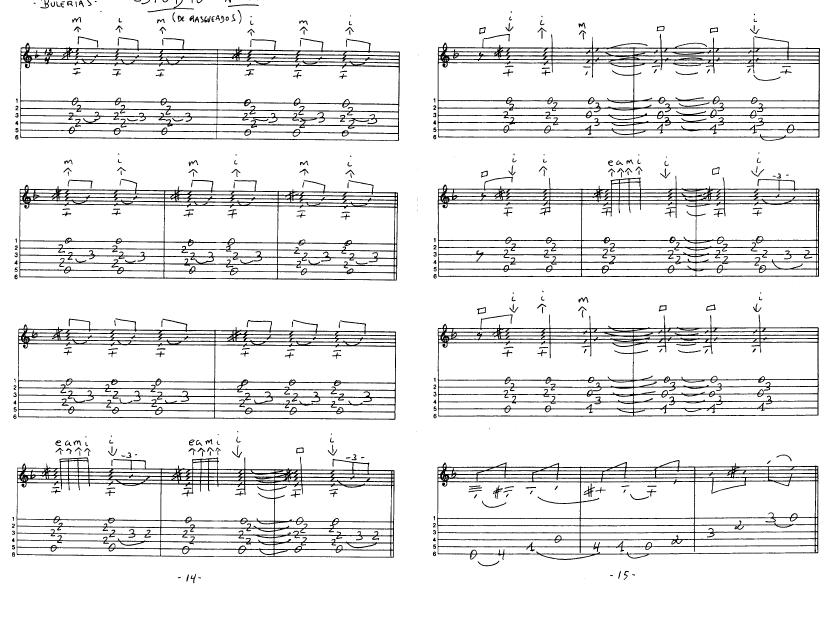|
Ricardo -> RE: Advice on Choice of Bulerias (Feb. 14 2008 7:45:02)
|
quote:
And again since pauses and syncopation are always present in PdL, especially in recent things, compas by PdL is hard to learn. So I repeat for the third time, it's not that Paco plays out of compas, it's that you can't start understanding simple conventional Bulerias through his pieces. Maybe some of you talented ones can, but it doesn't work for me.
About syncopation, which scares a lot of folks, this is how I feel about it.
Rudiments are rhythmic combos that students learn and gets used to, so when they see them occur in a different situation they become easy to feel and execute at various speeds. So in flamenco, when beginners learn compas, they are learning certain rudiments, and confuse those for just he BASIC fundamental beat. True, there are a lot defining rudiments for something like bulerias, but the point is, the BASE has to be solid. You can learn the base from some patterns, but too often ONE certain pattern gets too much focus and then the student is stuck with that. As soon as a variation comes in, or off beat, basically, a DIFFERENT rudiment, then they are lost. That is why it is important to play for dance, because you HAVE to pick up on a lot of important rudiments and phrases that you dont' get form just strumming or guitar solos. Although, many guitar solos have them in there or are based on those patterns, a student might not pick that up by ear on from a score.
So, once the base is established properly, the fundamental beat, and some rudiments to get refer to, then when new synchopations come in to be learned, they are quickly absorbed, felt, and memorized. It is like you have a map, and you over lay the synchopations on top and can clearly see how they fit. Like in golf, you play the ball where ever it lands and don't worry so much. Same with synchopations, you just keep the beat going and things fall into place. No need to squeeze and square things into your 12 box rudiment you learned at first. You just keep a beat, it is that simple, and play the notes "as they lie" relative to the beat. You can actually learn in real time that way, by repeating or looping notes from one beat to the next, adding more as you get more solid, and never worrying about 12 or whatever, because in the end it all adds up assuming you felt each note correct relative to the beat you maintain. Like Guitarbudda said, everything is either on or off the beat in someway, so it is not so hard to figure on that small scale.
So the more patterns you learn, easier it gets to fit them over your compas "blue print".
About moraito being easy once again, my point was really that I have not heard anyone doing Moraito so correctly in rhythm, that did not ALSO know some paco, tomatito, etc. Once you learn some of those rudimentary patterns, you realize, Morao is just as hard or easy as most of the other guys, and it just comes down to taste of the style.
Ricardo
|
|
|
|


